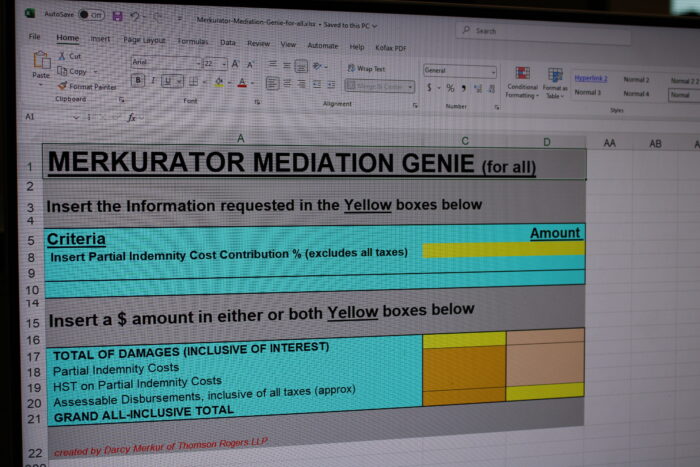Contributory Negligence: Where The Plaintiff Is Partly At-Fault
Author(s): Deanna S. Gilbert
April 5, 2021

In personal injury litigation, the concept of liability/fault is not “black or white;” meaning, a car accident, slip and fall, or other traumatic event causing injury need not be the fault of one person or the other. Rather, there may be circumstances where the injured person bringing the lawsuit (the “Plaintiff”) can be held at-fault in addition to any fault on the part of the party being sued (the “Defendant”). The concept of the Plaintiff being some degree at fault is called “contributory negligence.”
How Can A Plaintiff Be Contributorily Negligent?
The two ways in which a Plaintiff may be found to be contributorily negligent include:
- Actions or omissions that contribute to the cause of the incident – E.g. Where the Plaintiff is the driver of a left-turning vehicle that gets t-boned by an oncoming vehicle that runs a yellow light, the Plaintiff may be contributorily negligent for having initiated a left-turn without keeping a proper lookout for oncoming cars.
- Actions or omissions that contribute to the cause or severity of the injuries – E.g. Where a Plaintiff is riding a bicycle without a helmet, gets hit by a car, and suffers a brain injury, the Plaintiff may be attributed some fault for the failure to wear a helmet to protect the brain.
Importantly, the Plaintiff’s actions or omissions must cause or contribute to the incident or injury in order to result in a finding of contributory negligence.
In the example above at #2, had the Plaintiff cyclist only suffered an ankle fracture rather than a brain injury, then the failure to wear a helmet would not likely result in any contributory negligence on the part of the Plaintiff because helmets do not protect against ankle fractures; the helmet would be a moot issue.
What Are Some Common Examples?
Below are a few (non-exhaustive) examples of where the issue of contributory negligence commonly arises:
- Cases where a Plaintiff may have slipped and fell on icy/snow while wearing high heels or running shoes, instead of more appropriate footwear like winter boots.
- Cases where a Plaintiff gets hit by a car while j-walking, as opposed to crossing the street at a designated crosswalk or traffic light.
- Cases where the Plaintiff is a passenger in a motor vehicle accident, where the plaintiff knew or ought to have reasonably known that the driver of the vehicle in which the Plaintiff was a passenger was impaired by alcohol or drugs.
- Cases where a Plaintiff suffers serious injuries in a car accident, when the Plaintiff had failed to wear a seatbelt.
What Happens if the Plaintiff is Found Contributorily Negligent?
If the Plaintiff is assessed to be contributorily negligent, then the value of the Plaintiff’s case is reduced by the same degree. For example, if the Plaintiff is 25% at fault, then whatever the Plaintiff’s case would have been worth on a 100% basis is reduced to 75%. Put into dollar terms, if but for the Plaintiff’s own negligence, the Plaintiff’s case would be worth $100,000.00, then if the Plaintiff is 25% at-fault, the Plaintiff will only receive $75,000.00. To the extent that any of the Plaintiff’s family members are advancing Family Law Act claims for their own losses arising from the incident, the Family Law Act claims will also be reduced by the same degree of the Plaintiff’s contributory negligence.
By How Much Will the Value of the Case be Reduced?
There are generally no hard-and-fast rules about contributory negligence. One cannot say, for instance, that the failure to cross at a crosswalk will necessarily equal to X% of contributory negligence. Rather, each case is determined on its specific facts having regard to other cases with similar facts.
One area where the Ontario Court of Appeal has given some guidance is with respect to the issue of seatbelt usage. In the matter of Snushall v. Fulsang, the Ontario Court of Appeal held that in so far as the degree of contributory negligence, the failure to wear a seatbelt should not exceed 25%.
Who Decides if the Plaintiff is Contributorily Negligent?
If the case proceeds all the way to trial, then the trier of fact (i.e. the judge or jury, depending upon who is deciding the case) makes the decision.
Conversely, if the case settles, then there never is a formal decision on the issue of contributory negligence but the parties informally agree to resolve the case for a certain amount of money that typically reflects some reduction of the value of the Plaintiff’s case for contributory negligence.
To Sue or Not to Sue?
If you believe that you have been injured by someone else’s negligence, but you also believe that you may have contributed to the incident, you may wish to consult with a personal injury lawyer to get a general sense of the extent to which you may be found at-fault. If the value of your case on a 100% basis would already be small and you expect to be partly at fault, then the case may not be worth pursuing. Conversely, if the value of your case on a 100% basis is expected to be significant, then even a partial reduction to the value of the case for your contributory negligence may still make the case worth pursuing.
Thomson Rogers offers free consultations so please feel free to reach out to us at any time. We are here to help.
Deanna Gilbert is a personal injury lawyer and a partner at Thomson Rogers. Her practice is devoted to representing Plaintiffs in personal injury litigation including cases arising from motor vehicle accidents, medical malpractice, slip and falls, product liability and assaults. Deanna can be reached at 416-868-3205 or by EMAIL.
For Thomson Rogers updates please subscribe to our email list here.
Share this






